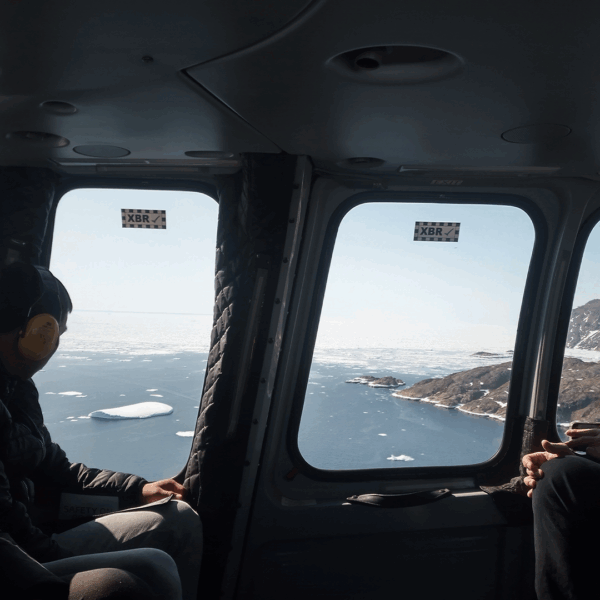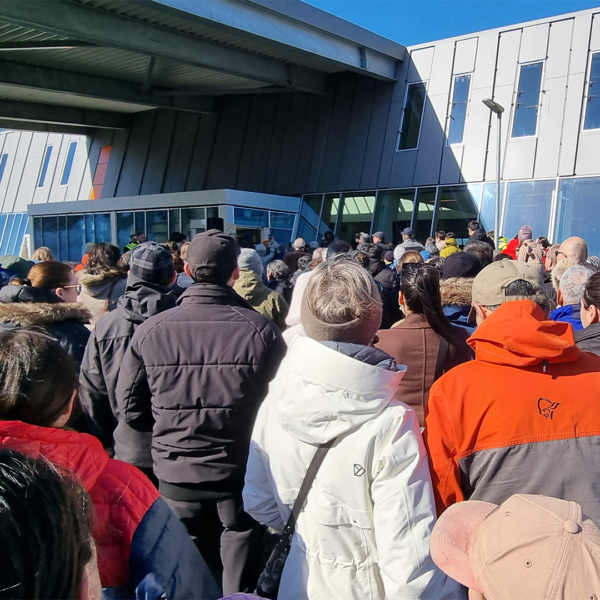Kirkenes, a Border Town Reconfiguring Alliances and Transport Infrastructures in a Divided Arctic
By Olga Povoroznyuk
A border town

Kirkenes is a town with the population of some 3,500 residents located in the Sør-Varanger municipality of the county of Troms og Finnmark in northeastern Norway and in the immediate vicinity of the Finnish and Russian borders. It was in Kirkenes that in 1993 the countries sharing the Barents Sea – Norway, Finland, Sweden and Russia – signed the Declaration on Cooperation in the newly established Barents Euro-Arctic Region. While Norwegians constitute the majority population, the community is home to Indigenous Saami, as well as to Russians, Finns, Kvens, and other ethnic minorities from neighboring countries, and more recently, from more distant parts of the world. The town is proud of its role as the “capital of the Barents Region” and of its borderland location, which has resulted in cultural diversity, high mobility and a fluid place identity. But recently things started changing
Connection to Russia
Exchange and collaboration with Russia, the closest and largest neighbour, has had a profound impact on the social fabric, connectivity, and development plans of Kirkenes and Sør-Varanger. The history of these relations goes back to free reindeer herders’ migrations across the Sapmi lands currently belonging to Russia and Norway, to the barter trade between the Pomors of Northwest Russia and coastal communities of Northern Norway, to establishment of the border between the two states in 1826. The liberation of Kirkenes and Eastern Finnmark from the Nazi occupation by the Soviet Army which is well preserved in local memory, became an important building block for peaceful cross-border relations between the nations throughout the cold war.

Since the beginning of perestroika and the subsequent establishment of the new Euro-Barents Region, cooperation between Norway and Russia has been rapidly evolving. Kirkenes and Nikel, the closest Russian settlement across the border, were announced sister towns. A border zone entry permit system was introduced allowing residents of the 30 km zone on both sides of the Russian-Norwegian border visa-free visits to the other country. This regulation has been especially helpful for family reunions, visits of friends, and frequent holiday and shopping tours across the border. While Norwegians liked visiting Nikel’ and Murmansk to tank their cars and to party, Russians frequented shopping centers in Kirkenes that contributed to the town’s commercial growth. Kirkenes also became home to a number of creative initiatives, such as the artist group Pikene på Broen (“Girls of the Bridge”, where the bridge stands for the link between the countries and cultures), and has hosted a number of cultural events drawing large audiences, especially from the borderland areas.
In parallel, a number of infrastructure projects has been planned and implemented to facilitate mobility and connectivity within the Barents region, and in particular to increase opportunities for business, tourism and cultural exchange between Norway and Russia. For example, the last stretch of the E105 road leading from Kirkenes to Murmansk, a new bridge and a new tunnel, both named after the Russian Orthodox monk Trifon, were opened with great fanfare in 2017.

At the same time, the sea port of Kirkenes was expected to turn into an international logistics hub, serving primarily the transportation of oil and mineral resources from West Siberia to Europe via the Northern Sea Route (NSR). The Arctic Railway (also known as the Arctic Link) was supposed to connect Kirkenes with Rovaniemi and the Finnish railway system, linking Asian and European markets via the NSR. The port expansion project was lacking economic prospects since the suspension of the Shtockman gas field extraction project. At the same time, the railroad construction was put on hold, officially due to the protests by Finish Saami reindeer herders whose lands would be encroached by this large infrastructure. Still, both projects remain at the centre of debates over the future of the town and the region.
Reconfiguring alliances and infrastructure

The relations between Russia and its Barents partners have turned sour since the Russian annexation of Crimea in 2014. Many of the Norwegian enterprises operating in northern Russia, including in the biggest Arctic city of Murmansk, have been winding down their operations as a result. Russia’s full-scale invasion of Ukraine in February 2022 changed Arctic geopolitics even more dramatically. Russia’s withdrawal from the Barents cooperation in September 2023 was a somewhat expected outcome of the increasingly tense relations with its western partners. Stakeholders and average residents of Kirkenes are wondering if these developments mark the end of the era of Barents diplomacy, free mobility and joint infrastructure plans between Norwegian and Russian communities.
In July 2022, the Norwegian Consulate in Murmansk suspended its public services indefinitely. This situation has affected Russian applicants for border zone permits and short-term tourist visas from Murmansk and the border areas to visit Norwegian communities like Kirkenes on private and business matters. In early October 2023, Norway, which had been the only remaining European country allowing unrestricted border-crossings for Russian cars, joined the ban against private vehicles with Russian plates.

According to the Border Commissariat in Kirkenes, the traffic with Russia has been declining since COVID, with numbers of border-crossings dropping more dramatically since the beginning of the war. While before COVID, around 370,000 crossing were registered per year, in summer 2022 only around 100 crossings per day took place, according to the commissariat. The recent ban of private cars will most likely make the border between the countries even tighter and restrict cross-border passenger mobility between Kirkenes and neighbouring Russian communities even more.
According to the harbormaster of the Kirkenes sea port, maritime traffic declined by 30% since the beginning of the war. In 2022, cruise ships stopped making port calls in Kirkenes. Once popular tours to the Russian border turned from an attraction to a risky undertaking. At the same time, cruise ship operators had to reconsider their tours as popular Russian destinations along the White Sea coast suddenly were no longer accessible.
With Russia leaving the Barents Euro-Arctic Council, the goals, priorities and alliances of this organization will be revisited. This new emerging architecture of the Barents cooperation will inevitably affect infrastructure planning and re-shape the future of the local community and its residents. While Kirkenes still remains one of three Norwegian ports allowing Russian fishing vessels to dock, Norway recently joined the boycott of Russian vessels using its ports for repair and maintenance. This was a blow to local businesses, such as the ship-building company KIMEK. As the company is a major employer in Kirkenes, many local residents lost their jobs. Not surprisingly, the port expansion project in Kirkenes, resting largely on cooperation with and investments from the eastern neighbour, is unrealistic under current conditions. Likewise, the construction of a railroad between Kirkenes and Rovaniemi will not happen in the foreseeable future.
The war against Ukraine and the respective boycott measures against Russia supported by Norway have been affecting enterprises and average residents, especially those of the Russian origin, having Russian family members and friends, or working in/with Russia, regardless of their political views. Most of the interlocutors I talked to in Kirkenes feel sorrow and frustration about the growing separation between the countries and its consequences for human relations and the social environment in Kirkenes. This situation leaves us with the question: Will Kirkenes, the border town that since the times of perestroika had built its identity and future prospects on close cooperation with its eastern neighbor, manage to fare well and remain an attractive place to live in a newly divided Arctic?







Please login to post a comment...